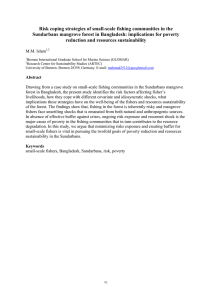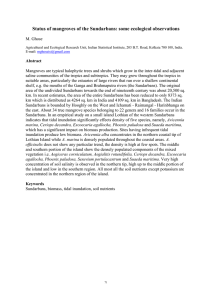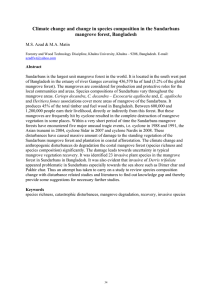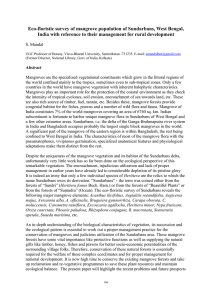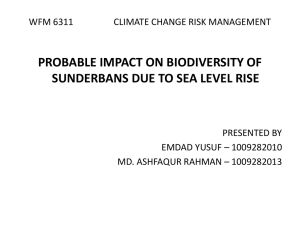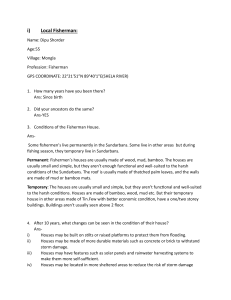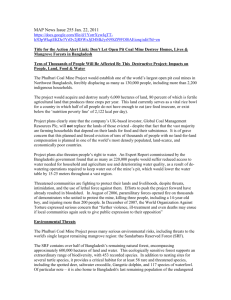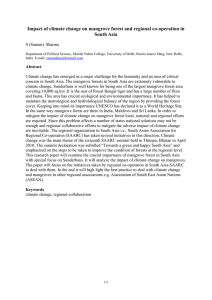Energy resources of the Sundarbans mangrove ecosystem M. Akther & M.S.I. Khan
advertisement
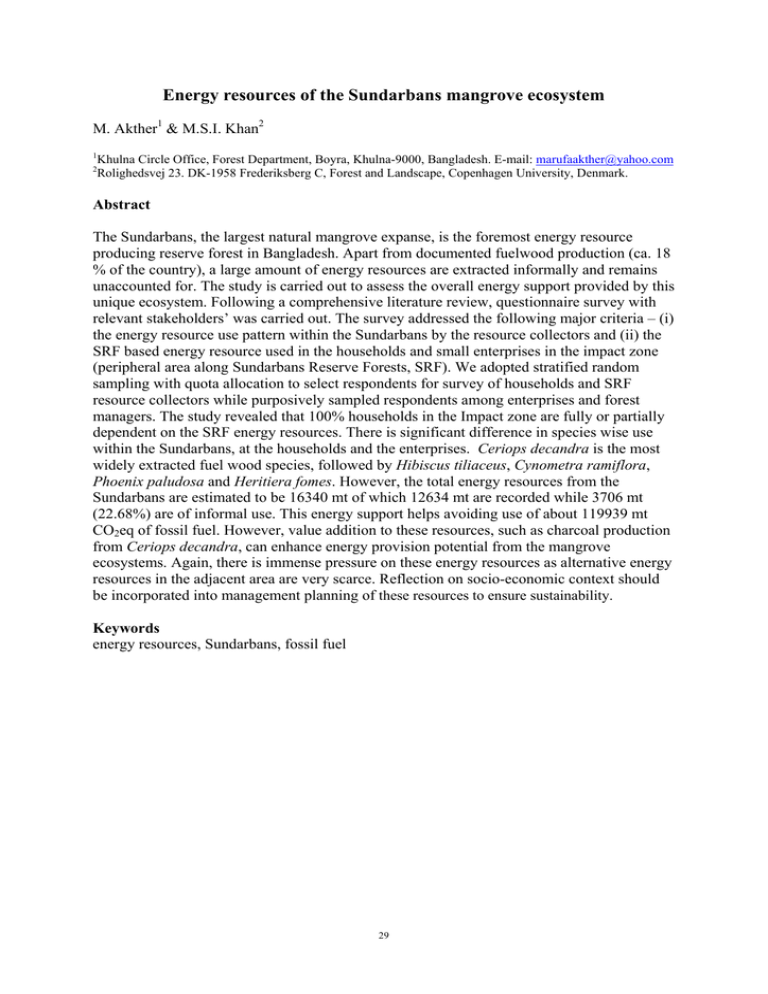
Energy resources of the Sundarbans mangrove ecosystem M. Akther1 & M.S.I. Khan2 1 2 Khulna Circle Office, Forest Department, Boyra, Khulna-9000, Bangladesh. E-mail: marufaakther@yahoo.com Rolighedsvej 23. DK-1958 Frederiksberg C, Forest and Landscape, Copenhagen University, Denmark. Abstract The Sundarbans, the largest natural mangrove expanse, is the foremost energy resource producing reserve forest in Bangladesh. Apart from documented fuelwood production (ca. 18 % of the country), a large amount of energy resources are extracted informally and remains unaccounted for. The study is carried out to assess the overall energy support provided by this unique ecosystem. Following a comprehensive literature review, questionnaire survey with relevant stakeholders’ was carried out. The survey addressed the following major criteria – (i) the energy resource use pattern within the Sundarbans by the resource collectors and (ii) the SRF based energy resource used in the households and small enterprises in the impact zone (peripheral area along Sundarbans Reserve Forests, SRF). We adopted stratified random sampling with quota allocation to select respondents for survey of households and SRF resource collectors while purposively sampled respondents among enterprises and forest managers. The study revealed that 100% households in the Impact zone are fully or partially dependent on the SRF energy resources. There is significant difference in species wise use within the Sundarbans, at the households and the enterprises. Ceriops decandra is the most widely extracted fuel wood species, followed by Hibiscus tiliaceus, Cynometra ramiflora, Phoenix paludosa and Heritiera fomes. However, the total energy resources from the Sundarbans are estimated to be 16340 mt of which 12634 mt are recorded while 3706 mt (22.68%) are of informal use. This energy support helps avoiding use of about 119939 mt CO2eq of fossil fuel. However, value addition to these resources, such as charcoal production from Ceriops decandra, can enhance energy provision potential from the mangrove ecosystems. Again, there is immense pressure on these energy resources as alternative energy resources in the adjacent area are very scarce. Reflection on socio-economic context should be incorporated into management planning of these resources to ensure sustainability. Keywords energy resources, Sundarbans, fossil fuel 29
